Pharynx and Swallowing
1/37
Earn XP
Description and Tags
Flashcards about the Pharynx and Swallowing lecture
Name | Mastery | Learn | Test | Matching | Spaced |
|---|
No study sessions yet.
38 Terms
Nasopharynx
Immediately posterior to the nasal cavities.
Oropharynx
Immediately posterior to the oral cavity.
Laryngopharynx
Immediately posterior to the larynx.
Eustachian tube (internal auditory tube)
Opens into the nasopharynx and aerates the middle ear.
Posterior boundary of the nasopharynx
Pharyngeal protuberance of occipital bone.
Anterior boundary of the nasopharynx
Nasal conchae.
Lateral part of the nasopharynx
Contains the pharyngotympanic (Eustachian tube) orifice.
Oropharyngeal isthmus (Fauces)
Passageway between the oral cavity and the oropharynx.
Velopharyngeal port
Opening between the oropharynx and nasopharynx.
Anterior boundary of the laryngopharynx
Epiglottis.
Posterior boundary of the laryngopharynx
Oesophagus.
Thyroid Gland
Butterfly-shaped gland located in the anterior neck region, anterior to the trachea and inferior to the larynx.
Isthmus
Midline tissue mass connecting the two lateral lobes of the thyroid gland.
Endocrine System
Hormone system of the body; includes glands that secrete hormones.
Hormones
Chemical messengers that circulate in the blood and regulate various bodily functions.
Thyroid Hormones
T3 and T4; regulate metabolism and have diverse effects on the body.
Parathyroid Glands
Adjacent to the thyroid gland; important for blood calcium levels.
What is the pharyngeal cavity, or pharynx, divided up into?
• Nasopharynx (which lied immediately posterior to the nasal cavities)
• Oropharynx (which lies immediately posterior to the oral cavity)
• Laryngopharynx (which lies immediately posterior to the larynx)
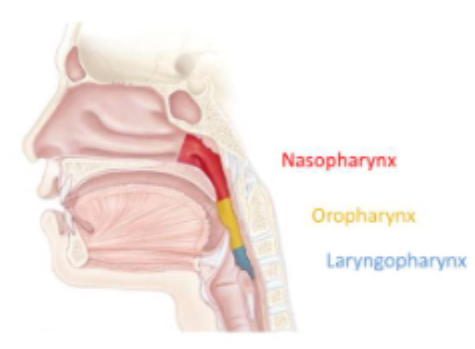
When does the nasopharynx become the oropharynx
The nasopharynx ends once it reaches C6 after that it becomes the oropharynx
What is the function of the nasopharynx?
W
• Common route for air and food
What are the boundaries of the nasopharynx?
Posteriorly – Pharyngeal protuberance of occipital bone
Anteriorly – Nasal conchae
Laterally contains - pharyngotympanic (Eustachian tube) orifice
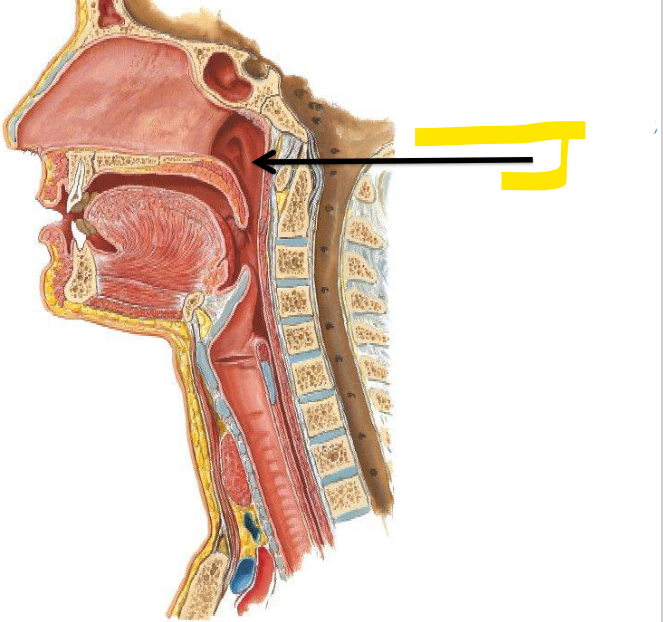
Name this part
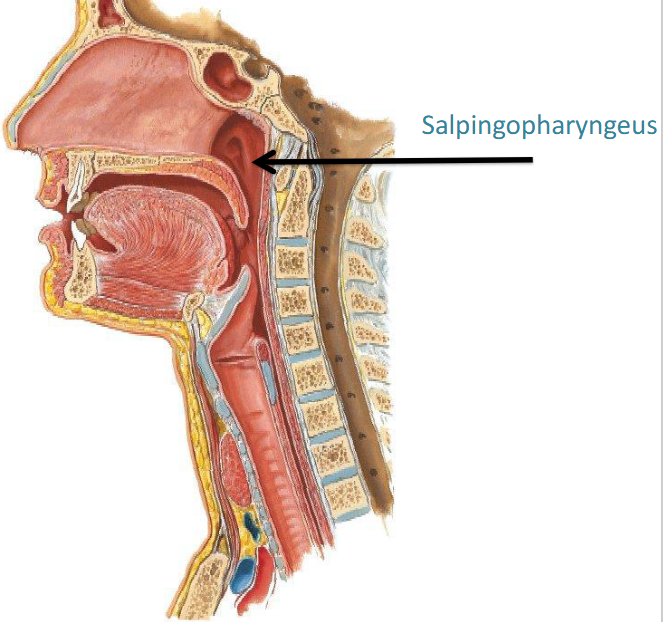
What is the boundary of the oropharynx?
Anterior – Oropharyngeal isthmus (Fauces)
= Passageway between the oral cavity and the oropharynx
(Passage between mouth and oropharynx)
Superior – Velum (soft palate)
Posterior – Hyoid bone
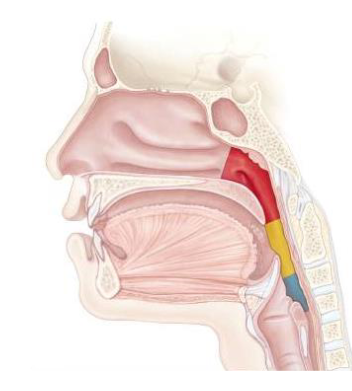
What is the function of the orphopharynx?
Processed food (bolus) will move into, From the oral cavity
Where is the Velopharyngeal port opening located?
Velopharyngeal port - Opening between the oropharynx and nasopharynx
What are the boundaries of the Laryngopharynx
Anteriorly – Epiglottis
Posteriorly – Oesophagus
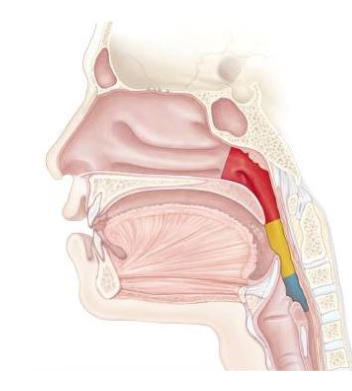
What are the 2 lateral lobes of the thyroid gland connected by:
It has 2 lateral lobes connected by a midline tissue mass called the isthmus.
Where is the thyroid gland located?
The thyroid gland is butterfly-shaped and is located in the anterior neck region, just anterior to the trachea and just inferior to the larynx.
What are the 2 hormones that the thyroid produces?
The thyroid gland produces 2 types of thyroid hormones: T3 and T4. The main functions of the thyroid hormones are in metabolism, but it has many diverse effects on the systems of the body
What is an Underactive thyroid?
deepening of the voice through thickening of the vocal cords though deposition of mucopolysaccharide
What is the thyroid gland attached too?
Attached to the arch of the cricoid
Where are the thyroid glands
Lies deep the infrahyoid muscles
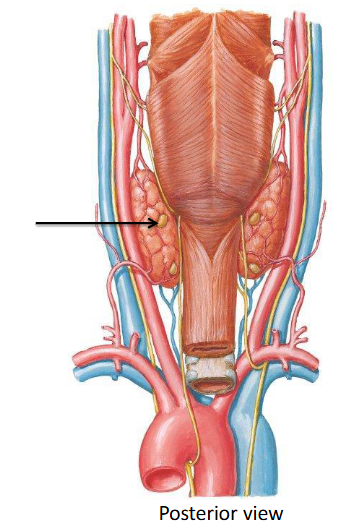
What is the arrow pointing too?
Parathyroid Gland
How many parathyroid glands are there usually?
Typically 4 parathyroid glands.
What is the function of the parathyroid gland?
Functions to regulate blood and skeletal calcium levels
Where are the parathyroid glands and what colour are they usually?
The parathyroid glands as their name suggests are adjacent to the thyroid gland. They are tiny yellow/brown tissue glands that lie on the posterior side of the thyroid gland
What are the hormones produced by the parathyroid glands important for?
The hormones produced by these glands are important for blood calcium levels. If these are not controlled precisely there are effects on nerve impulse transmission, muscle contraction and blood clotting - making these hormones is vital